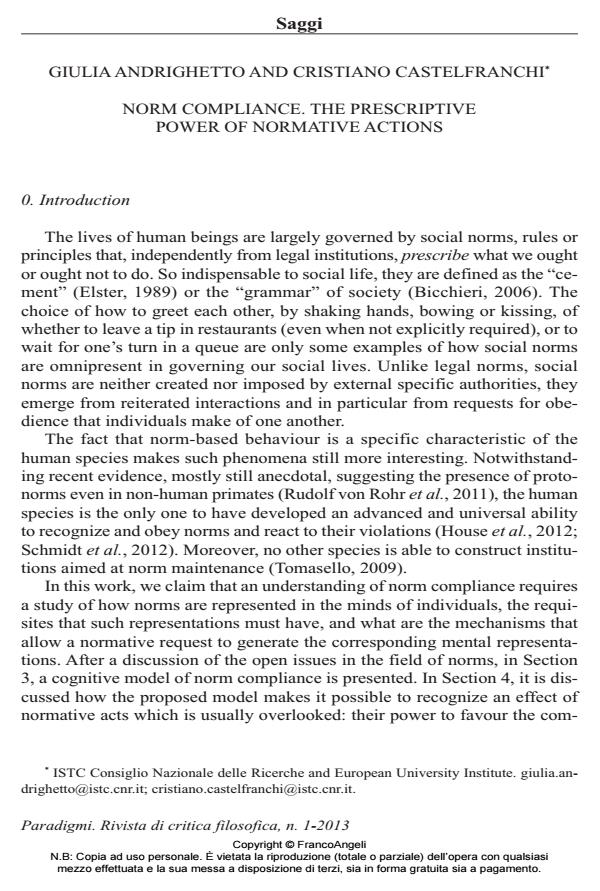Norm Compliance. The Prescriptive Power of Normative Actions
Titolo Rivista PARADIGMI
Autori/Curatori Giulia Andrighetto, Cristiano Castelfranchi
Anno di pubblicazione 2013 Fascicolo 2013/2
Lingua Italiano Numero pagine 12 P. 139-150 Dimensione file 106 KB
DOI 10.3280/PARA2013-002011
Il DOI è il codice a barre della proprietà intellettuale: per saperne di più
clicca qui
Qui sotto puoi vedere in anteprima la prima pagina di questo articolo.
Se questo articolo ti interessa, lo puoi acquistare (e scaricare in formato pdf) seguendo le facili indicazioni per acquistare il download credit. Acquista Download Credits per scaricare questo Articolo in formato PDF

FrancoAngeli è membro della Publishers International Linking Association, Inc (PILA)associazione indipendente e non profit per facilitare (attraverso i servizi tecnologici implementati da CrossRef.org) l’accesso degli studiosi ai contenuti digitali nelle pubblicazioni professionali e scientifiche
Per comprendere il legame tra norme sociali e azione, proponiamo un’analisi del modo in cui le norme sono rappresentate nella mente degli individui e dei meccanismi che permettono la formazione delle rappresentazioni normative. Tale modello cognitivo dell’obbedienza alle norme permette anche di riconoscere una proprietà delle azioni normative solitamente ignorata: il loro potere di favorire la comunicazione e la conseguente diffusione di richieste normative.
Parole chiave:Aspettative, comunicazione comportamentale implicita, influenzamento normativo, modellazione cognitiva, norme, punizione
- Can Lawlike Rules Emerge without the Intervention of Legislators? Klaus G. Troitzsch, in Frontiers in Sociology 2/2018
DOI: 10.3389/fsoc.2018.00002 - The Cambridge Handbook of Moral Psychology Giulia Andrighetto, Eva Vriens, pp.78 (ISBN:9781108894357)
- Indignation and conflict-associated behavior – does cognition matter? Julia A. Schreiber, Mathias Jaudas, Jürgen Maes, in International Journal of Conflict Management /2025 pp.586
DOI: 10.1108/IJCMA-05-2024-0118 - Advances in Social Simulation 2015 Klaus G. Troitzsch, pp.413 (ISBN:978-3-319-47252-2)
- The Cambridge Handbook of Moral Psychology pp.31 (ISBN:9781108894357)
Giulia Andrighetto, Cristiano Castelfranchi, Norm Compliance. The Prescriptive Power of Normative Actions in "PARADIGMI" 2/2013, pp 139-150, DOI: 10.3280/PARA2013-002011